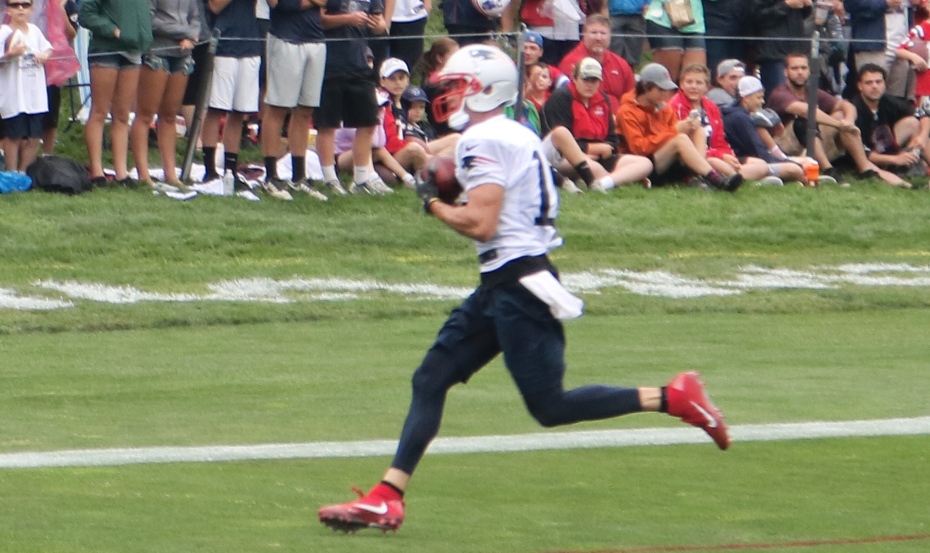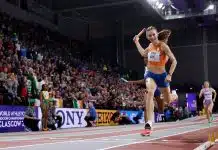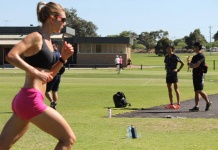Running is undoubtedly one of the best activities for improving cardiovascular fitness. Having said that, it does have some drawbacks when it comes to overall fitness and building strength.
Runners tend to have some weak spots, notably hip and glute strength, balance, and upper body strength. Primarily, this is because running works one plane of movement. That’s why it pays for runners to engage in other sports that work a wider range of movement patterns.
Lateral movement is the key to building overall strength and working different muscle groups. Sports like football, rugby, tennis, and squash all involve a lot of lateral movement which helps to build strength in other areas that running simply doesn’t address. Activating these muscles on a regular basis not only helps to build strength in these areas but also helps to prevent injuries for runners.
It therefore pays for runners to engage in other sports that do engage these different muscles and involve lateral movement in order to not only improve their overall fitness but also to improve performance and avoid injury.
You can read some great tips and expert advice from some of Australia’s leading runners here.
The power of CrossFit
One trend that is sweeping the world right now, including right here in Australia, is CrossFit.
CrossFit is a form of high-intensity power fitness (HIPT). A CrossFit workout may include dynamic exercises like:
- plyometric jumping
- Olympic weightlifting
- kettlebells
- explosive bodyweight movements
Because of the range of exercises and movements involved in a CrossFit class, there are a number of benefits that come with it, and many of these can help runners to improve their overall fitness and strength.
The high-intensity, multi-joint movements in CrossFit may help you gain muscle strength and stamina. Adding additional weight to your workouts can further increase muscle gain by adding stress to your muscles.
Due to the nature of HIPT training, you may also improve your aerobic fitness and increase your VO2 max, or the maximum amount of oxygen you can utilise during exercise.
CrossFit workouts often include functional exercises or exercises that mimic movements you do in everyday life. Functional movements, such as squats, kettlebell swings, or overhead presses, can help improve agility, balance, and flexibility.
CrossFit is not without its detractors, however, and CrossFit is not for everyone. Due to the intensity and variety of the exercises, some people are more prone to injuries when they do CrossFit classes on a regular basis. Common injuries include:
- Low back pain
- Rotator cuff tendonitis
- Achilles tendonitis
- Knee injuries
- Tennis elbow
As a runner, it’s important to weigh up the potential benefits of CrossFit when it comes to your running performance, however, the potential to improve your overall performance is not in question.
How does running translate into other sports?
Whilst runners can benefit from engaging in other sports, there are also many sports where athletes can benefit from introducing running to their training regime.
Running is one of the best activities for overall cardiovascular fitness and raising an athlete’s VO2 max. This was a key part of the training regime of Australian runner Craig ‘Buster’ Mottram. Running is an ideal exercise to mix with sports like basketball, tennis and even cycling, where a big cardiovascular machine means that athletes can hang longer and often faster.
Sports that also involve upright, weight-bearing movement are your best bets for enhancing running, and vice versa.
Whilst swimming provides a great cardiovascular workout, it won’t help you much as a runner. Rowing and cycling also won’t provide much benefit. Running, however, can help those sports, which is one reason you’ll often see these athletes using running for training.
Here are two sports that benefit from running:
Boxing
Love it or hate it, running is a great form of training for boxers as it helps boost endurance and increase your heart rate.
Running for boxing is an aerobic training and conditioning exercise, meaning it improves strength, speed, and aerobic fitness. Conditioning is imperative for contenders to become unstoppable both in and out of the ring.
Boxing roadwork traditionally consisted of long-distance running, but modern boxing roadwork is a bit different. Today’s boxing roadwork includes distance as well, but your miles are broken up with various forms of interval training including sprints, backpedals, shuffling left and right, and movements from the ring, like rolling and slipping.
Boxing is a great way to get in shape no matter what sport you are involved in and can really help to get your figure in shape.
UFC/Martial Arts
UFC fighter Conor McGregor has been described as the ‘complete package’ by ex-Olympian and Harley Street expert Professor Greg Whyte. Working with Whyte, McGregor was tested for cardiovascular endurance, anaerobic capacity, strength endurance and maximum power, and the results mirrored any elite athlete that Whyte has studied.
Running is an important element of that training for all UFC or MMA fighters. Endurance in the ring is important and whilst Whyte goes on to say that a marathon runner, “may outrun Conor, they would have nowhere near his strength”.
UFC fighters need to work on all areas of their fitness and cardiovascular is super-important.
Perennial lightweight contender Edson Barboza recently changed his training regime, relocating to Sout Florida and changing up his team. The change included the addition of more running into his training programme and he hopes to go the distance in his top of the card fight with Giga Chikadze at Fight Night in Las Vegas. Barboza is the slight favourite for the fight with Betway Sports offering odds of 1.83 for a Barboza win and 1.95 for Chikadze.
The Bottom Line
Whether you want to become a better runner or you want to get better at another sport that you play, mixing up your training programme to include running or to include other sports can only help you in the long run.
Running provides an awesome foundation for so many sports whilst other sports provide the range of movements that running simply doesn’t offer.
















